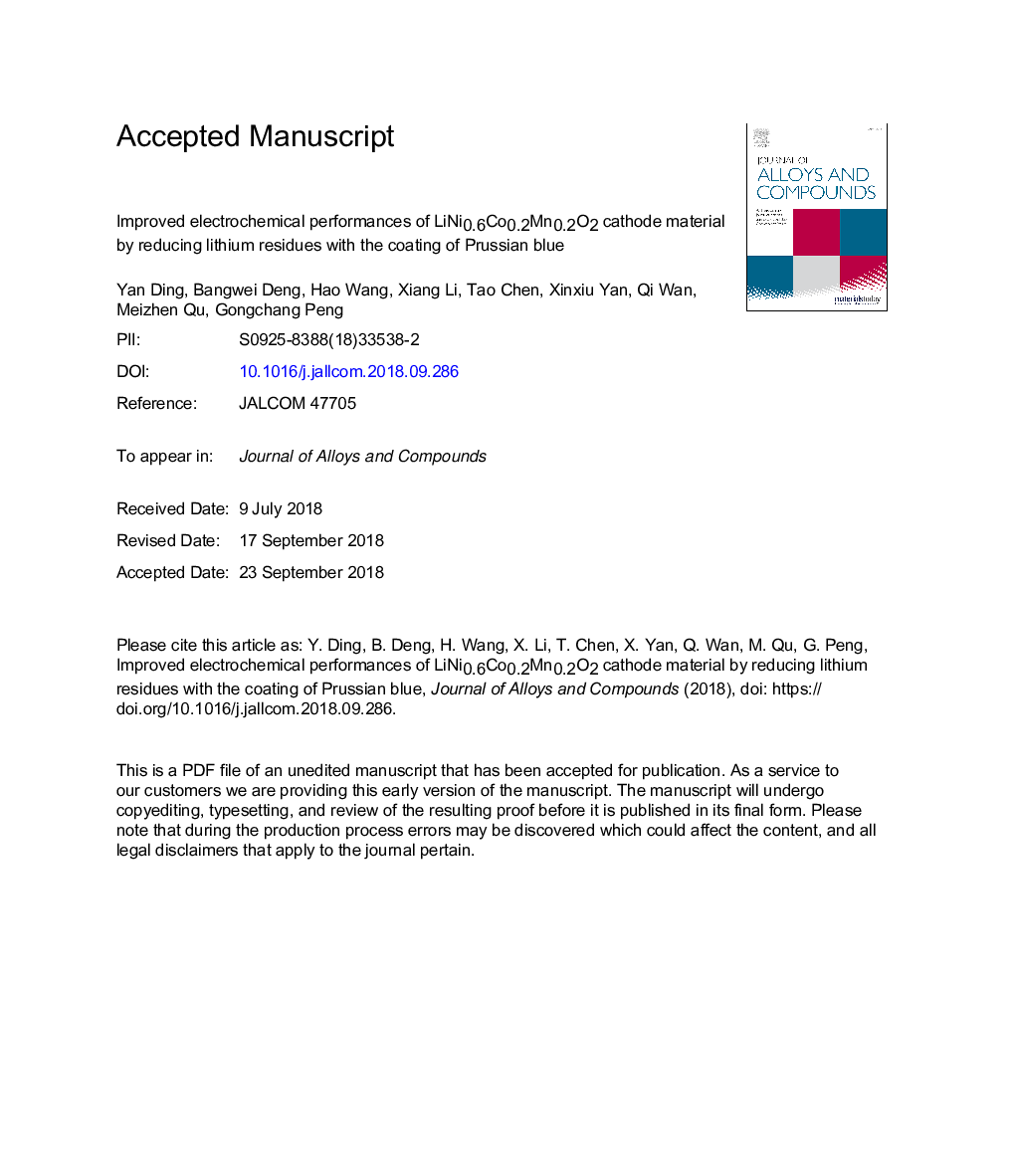| Article ID | Journal | Published Year | Pages | File Type |
|---|---|---|---|---|
| 11015817 | Journal of Alloys and Compounds | 2019 | 36 Pages |
Abstract
Reducing the lithium residues on the surface of LiNi0.6Co0.2Mn0.2O2 (NCM) cathode is one of the most main challenges in Li-ion battery research. To address this task, a surface coating of Prussian blue (PB) of metal-organic framework is applied to NCM cathode to solve this intractable problem via a simple dry-coating method. The transmission electron microscopy (TEM), Fourier transform infrared spectroscopy (FTIR) and X-ray photoelectron spectroscopy (XPS) results show that the uniform smooth coating can provide a protective shell to block H2O and CO2 absorption from the air, suppressing lithium residues formed on the surface. The color change experiment between PB and Li residuals illustrates PB can react directly with surface residual lithium species. As a result, the amount of residual lithium, such as LiOH and Li2CO3, is significantly reduced. The 0.5â¯wt% PB-modified NCM delivers a high discharge capacity retention of 81% after 500 cycles at 1â¯C discharge rate and exhibits a superior storage property after storing in air for 14 days. Furthermore, electrochemical impedance spectroscopy (EIS) confirms that the PB-NCM could hinder the impedance increase during cycling. These results clearly indicate that the PB coating layer contributes to the reduction of lithium residues and the creation of thinner cathode-electrolyte interface, improving structural stability and cycling performance of NCM.
Related Topics
Physical Sciences and Engineering
Materials Science
Metals and Alloys
Authors
Yan Ding, Bangwei Deng, Hao Wang, Xiang Li, Tao Chen, Xinxiu Yan, Qi Wan, Meizhen Qu, Gongchang Peng,
